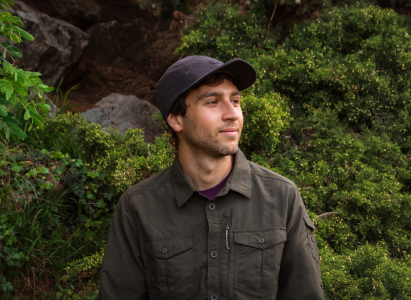
Dael Sassoon (Environmental Researcher)
My name is Dael Sassoon and I am a postdoctoral researcher working at Geosciences Barcelona (GEO3BCN-CSIC). I’m originally from Italy, but my path has taken me all over the world and I have lived in England, France, and now Spain. I have always been eager to see new places, to experience the beauty of our planet’s nature, and be a witness to the many cultures it hosts. As a kid, my family always made it a priority to take us out into green spaces and experience new countries, sometimes these being the savannahs of Kenya while other times the Alpine forests not too far from my hometown of Milan. This ignited a deep love for travel which led me to pursue a career in environmental research, opening my mind to the wonders of nature but also making me incredibly aware of the many threats to our environment.
My research mainly looks at how our ecosystems have changed and evolved over time – my specific field is called palaeoecology, which is ecology with a focus on everything ‘palaeo’, meaning past. I mainly do this by studying the variations in pollen which has been produced by plants in the past and has accumulated in the soil over time, and I try to understand what these changes mean environmentally. In simple terms, if I find oak pollen it means the climate was warm and wet, and if I find pine pollen it means it was cold and dry. But of course a forest is very diverse, so the changes in the amounts of pollen from a large variety of plants can tell us what the environment and climate was like up to thousands of years ago, based on the conditions they need to grow. So far, my research has revealed that the efforts of the Woodland Trust to restore Ancient Woodlands in Wales, which for many years have suffered from the planting of conifer trees for the production of timber, is on the path for bringing back their original biodiversity. Through my work, I have also found that to Scots pine, previously thought to only be a native in Scotland, might be actually be a native species in some parts of England. But ever since a volunteering trip with Operation Wallacea to the Pacaya Samiria National Reserve in the depths of the Peruvian jungles, my main passion has become the Amazon. That’s what convinced me to pursue a PhD, and I was lucky enough to return to the Peruvian Amazon to study it’s environmental and climatic history.

Now that I am further along in my research career, I have chosen to keep following this path. My current project, called PALOMA (funded by the Marie Skłodowska-Curie Actions fellowship, European Commission), focuses on modelling past climate change in the lowlands of Amazonia, mainly in Peru but this time also including Ecuador. I am fascinated by this region not only because it is the most biodiverse part of the which means I get to see fabulous wildlife, but also because this area is crucial for regulating the transport of water throughout the Amazon. This means that any change here might affect the rest of the Amazon basin, and that any conservation effort here will have the most impact on the rest of the continent. In my project I will be using a combination of pollen and machine learning models to try and reconstruct climate variables like temperature and rainfall over the last few thousand years. This should give us an idea of how sensitive the Amazonian lowlands are to climate change and how we might expect this region to respond in the future.

Of course my life is not only research, and in my spare time I love hiking, climbing and photography, but I also like to do more creative things like writing and playing my bass. Right now, however, I am busy planning for my upcoming trip to the Amazon this summer. I simply can’t wait to travel back to the jungles and rivers of this breath-taking region, and I am thrilled to have Craghoppers as a partner for my adventures.
